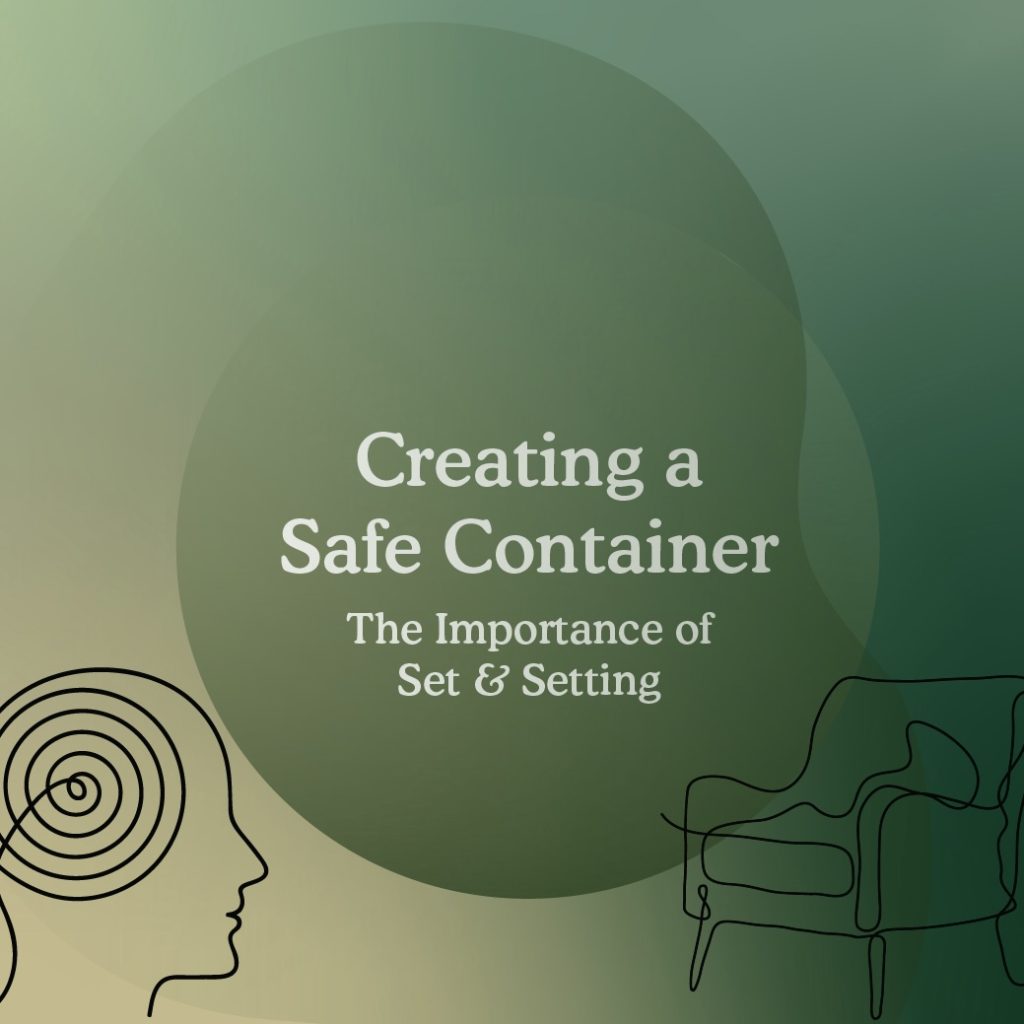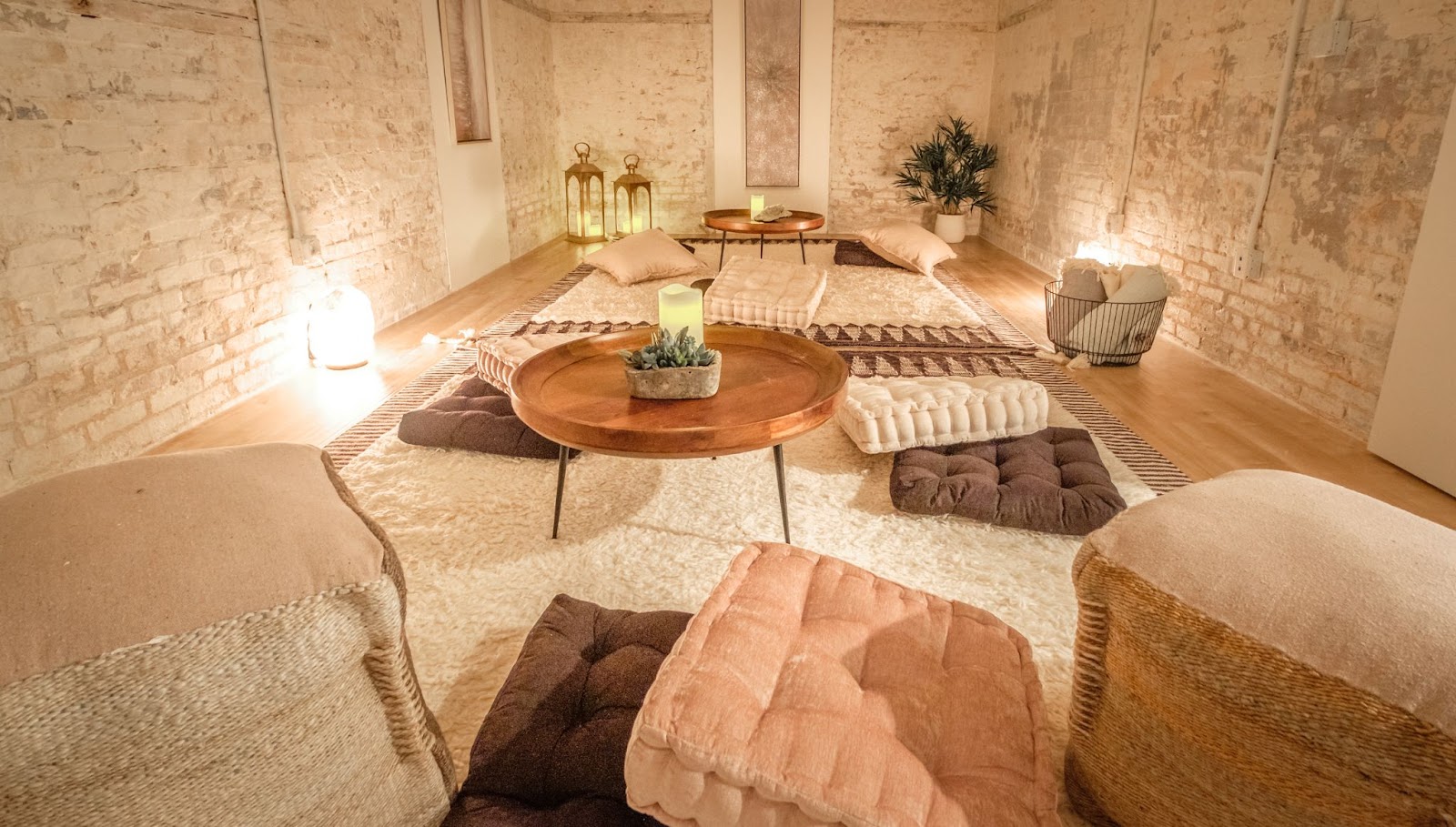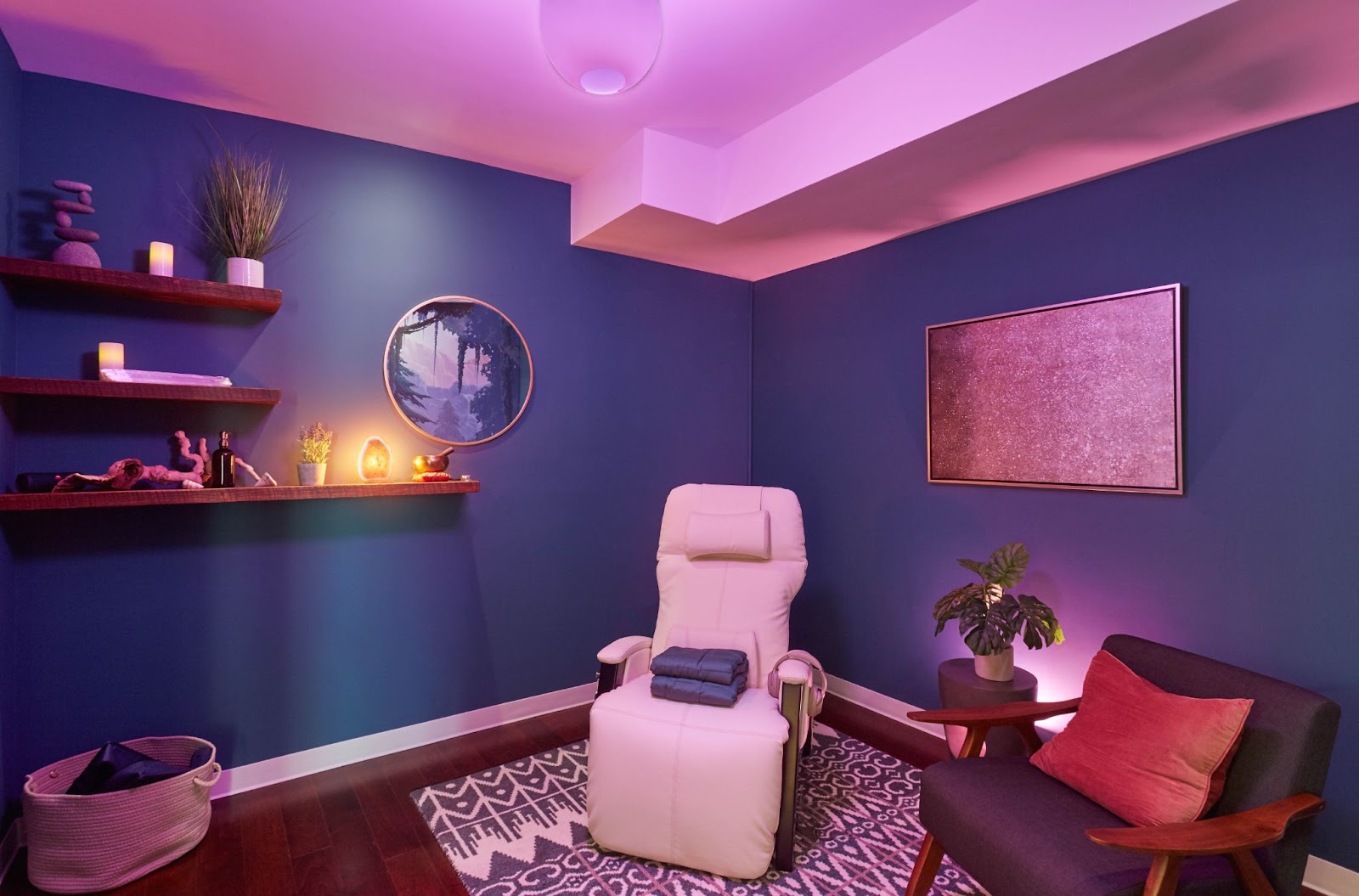
Creating a safe container is a topic hot in the psychedelic scene lately, especially after Michael Pollan’s docuseries How to Change Your Mind launched on Netflix; but what does it actually mean? For our purposes, a ‘container’ refers to the psychological, temporal, and physical space held by providers and a therapy participant in order to protect that participant’s healing journey. It can be represented tangibly by the four walls of an office or the binding of a journal. It can also exist ethereally in mutual understanding and commitments made between parties.
In the world of psychedelics, there are two components of a therapeutic container that get special attention: set and setting. Both aspects are incredibly important in preparing for a psychedelic healing journey and are paid extra attention in a therapeutic setting. While ‘changing your mind’ in nature or in the comfort of your own home is intriguing, working with the medicine in a controlled, safe, and legal environment provides a comforting and harmonious experience – both for your set and your setting. Let’s explore them both.

Set: Creating an Inviting Mindset for Change
In ketamine-assisted therapy, set refers to the mindset of the client who is about to experience ketamine. A supportive mindset for therapy is developed collaboratively between the provider and the client, however there are some questions that can be helpful to reflect on before your next session.
1. What are my expectations regarding ketamine-assisted psychotherapy?
Ketamine is not a panacea. Rather, we like to view it as a catalyst for change. Having realistic expectations for ketamine therapy is an important part of preparing an appropriate mindset for treatment. Do people achieve their recovery goals? Absolutely! Does it take both intentional independent work and collaboration with a therapist? These definitely help. Many people continue with talk therapy after ketamine for ongoing processing and support in implementing life changes. Learn more about what you can expect from ketamine-assisted psychotherapy here.
2. What am I mentally consuming that may interfere with my intentions or ketamine journey?
Look, there’s nothing inherently wrong with loving true crime podcasts, finding enjoyment in reality television, or watching slasher movies. However, the time immediately before and throughout ketamine treatment may not be the time to engage with such pastimes. Ketamine is what is sometimes called a nonspecific amplifier, meaning that it has the potential to bring up and amplify whatever may be floating around in our recent memory. This is why setting up and engaging with an intention is so important; we want that to grow in your journey. On the other hand, engaging with media which focuses on violence or other unwanted qualities can result in ketamine journeys which become crowded with these external tensions.
It would be socially irresponsible to encourage you to forever stop watching the news or stop cheering for that sports team you love but frequently disappoints you. However, even a caterpillar temporarily withdraws in order to become something new and reformed. Sometimes resting for an activity can be the most important healing action.
3. Who can I talk to about my ketamine experiences?
Unfortunately the stigma around psychedelics and mental health is real and can be a significant challenge to some people’s recovery. It is quite possible that not everyone in your life will be receptive to your choice to pursue ketamine treatment. Not everyone knows how to talk about mental health. Furthermore, some people may not be ready to meet you where you are at as you begin to make changes and heal. Bridging these divides is possible, but will likely take time should you decide to dedicate the energy toward doing so.
In the meantime, figure out who will be your cheerleaders during treatment, and be intentional about connecting with them between sessions. If your outside doctors or providers have questions, consult this article on How to Talk to Your Doctor About Ketamine Treatment. The Field Trip Health Trip app can also be a great place to go to connect with like minded individuals who may have had similar experiences.
Setting: Ensuring a Safe Space for Journeying
Setting, then, refers to the space where the ketamine therapy takes place. A great amount of intention has gone into the aesthetics of our clinics and to assuring that the treatment team has everything on hand to keep you safe throughout the journey. That said, here are some questions to make sure that your entire multi-session treatment period is well cared for.

1. What does my treatment team need to know about me?
Ketamine treatment works faster than many other therapies. Treatment providers have an abbreviated amount of time to get to know you, so it’s important to be as honest and forthright as you can during intake and preparation. Talk to your providers about concerns you might have about previous substance use habits. Let them know of any dietary restrictions that may impact the snacks you can eat after sessions. Do you have any scents that you’re allergic to or maybe just dislike? Your treatment team will do their best to accommodate your preferences and respond to any concerns or questions you may have.
2. What are my boundaries around the therapeutic use of touch?
At some point leading up to your first ketamine exploration, your therapist will likely engage you in a conversation regarding the therapeutic use of touch. Therapeutic touch is our clinics is always non-sexual and used only with the explicit consent of the patient. It may look like the therapist placing a comforting hand on your shoulder or offering a pillow for you to squeeze through a difficult part of the psychedelic journey. Consent to therapeutic touch is not a requirement for KAP, but many patients find it to be a helpful option to have available. Spend some time reflecting on what sorts of therapeutic touch may be most supportive to you, or whether you would prefer none at all.
3. What boundaries do I need to uphold to protect my treatment time?
The days immediately before and right after ketamine treatment is a particularly important time for introspection, mindful practices, and self-nourishment. Ideally, your treatment period should give you space to heal and reflect. Of course, complete elimination of stressors is not realistic, but consider what you might be able to do to minimize certain stressful areas of your life temporarily to protect your ketamine treatment time. Are there certain people in your life that leave you feeling judged or worse after interacting with them? Now might be a good time to place some interpersonal boundaries and take some space. Do your kids know how to push all your buttons? Consider asking for some additional help for the next couple weeks while you focus on taking care of you. Do you need to take some vacation time from work? Step back from a project? Set aside time for meditation and reflection each night? Do what you can to protect your healing during this time.

Does Field Trip Health have a ketamine therapy clinic near me?
Field Trip Health has clinics across Canada in Toronto, Montreal, Vancouver, Ottawa, Hamilton, Kitchener-Waterloo, Thunder Bay, and Sault Ste. Marie, and an at-home program for those who live more than an hour from the nearest clinic. If you are ready to begin your journey toward healing and build your personalized treatment plan, then book a free discovery call with one of our team members.